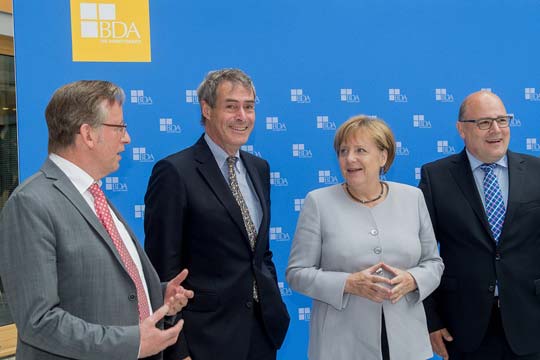EU internal migration has dominated so far
To date, the majority of immigration into the labor market has taken place within the framework of EU internal mobility (approx. 55% in 2020). A downward trend has already been observed here in recent years. In the future, the potential for EU immigration will continue to decline, as many EU countries are facing similar demographic challenges. These countries are also experiencing a decline in the working-age population. It is therefore important to focus and increase recruitment efforts on third countries, i.e. countries outside the EU.
Paying more attention to skilled workers from third countries
The Skilled Immigration Act, which came into force in March 2020, has created improvements and new immigration opportunities for people from third countries. Further developments are planned for this legislative period. The BDA has made concrete proposals at
. It is important that a signal is sent internally and externally that Germany wants to attract foreign skilled workers to the labor market. Despite the many reforms to immigration law in recent years, there are still comparatively few qualified skilled workers from third countries outside the EU coming to Germany. The German economy also sees itself as responsible for creating and maintaining a welcoming culture that makes immigration to Germany even more attractive for highly qualified skilled workers.
Improve the practical implementation of immigration law regulations
Any law is only as good as its practical implementation. For some years now, it has become clear that it is above all the practical problems in the administrative implementation of immigration law that at least make it more difficult for skilled workers to immigrate to Germany, and in some cases even prevent it.
Long waiting times at diplomatic missions abroad, complicated and lengthy procedures and suboptimal cooperation between the various authorities and agencies mean that the legal immigration regulations cannot fully achieve their intended effect in practice. The complexity and lack of transparency of the immigration procedure becomes particularly clear when one considers the 195-page application notes on the Skilled Immigration Act from the Federal Ministry of the Interior, the 390-page administrative regulations on the Residence Act, the 669-page visa handbook from the Federal Foreign Office and the 182-page technical directive from the Federal Employment Agency on the Residence Act and Employment Ordinance. The aim here is to create free capacity in the authorities through simplifications in order to administer the significantly larger volume of applications that we can expect with the targeted increase in labor migration.
The introduction of an electronic file for communication between foreign missions, immigration authorities and the Federal Employment Agency as well as the introduction of a comprehensive inter-agency IT system for skilled labor migration are also irreplaceable prerequisites for accelerated and smooth processes. In order to facilitate the immigration of skilled workers and create fast decision-making processes, the bundling of the tasks of the approximately 600 municipal immigration authorities of the federal states in the area of skilled labor migration into specialized, supra-regional central immigration authorities is necessary, as provided for in the Skilled Immigration Act.










